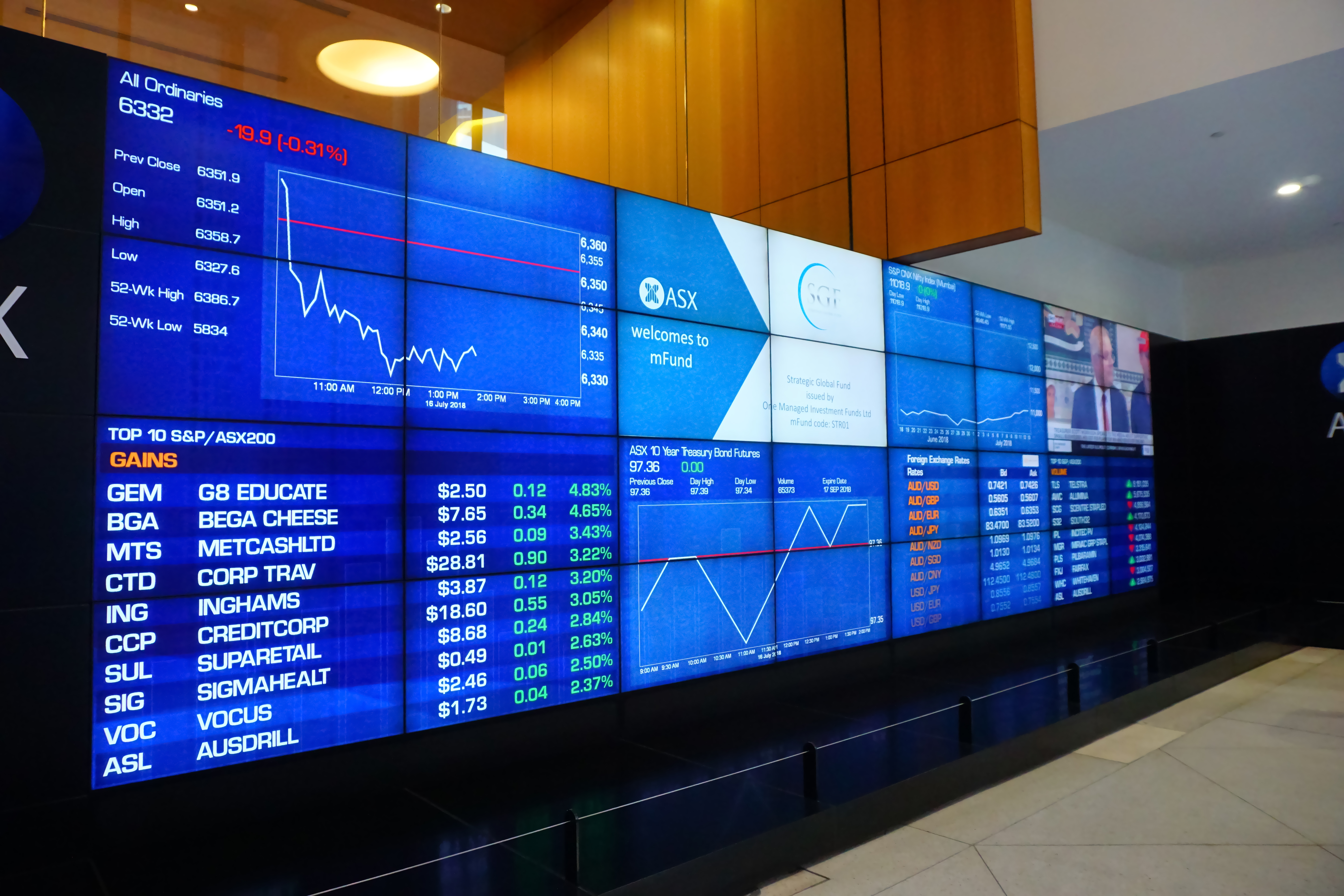How professional investors value stocks and why they ignore 'earnings beats'
The stock market is vast and confusing, but understanding a few basic principles around valuation and how share prices work over the short term will help amateur investors make better decisions.
One key principle is that shares are valued by the market on the assessed net present value (NPV) of their future cash flows.
This means that if you divide the sum of all the future years of a company's discounted earnings by its number of shares on issue, you should reach today's share price.

In practice though share prices won't match this outcome, as swinging sentiment and general market conditions mean stocks will often trade below, or above, the market's average forecast for the NPV of future earnings.
Now we know this, let's look at how professional investors asses the NPV of future earnings and what this shows us about how to expect stock prices to move on a daily basis.
Discounted cash flow analysis (DCF)
A DCF is the most common way to value a business. Anyone can do it using an excel spreadsheet or free online calculator that allows you to input forecast earnings and growth rates to provide an NPV.
The first step of a DCF is to estimate the future profits of a business out over a period of say 10 years. You might assume a business makes $20 million in total profit over 10 years, with the annual profits growing at 5% each year.
However, $20 million of profits in ten years' time is not worth as much as $20 million in profits today under the principle of the time-weighted value of money.
There's also significant risk those profits never materialise in an inherently uncertain future.
This means the further out in in time you estimate those profits the more you need to adjust for the risk they don't materialise by applying a higher discount rate.
The discount rate is used to adjust for risk and opportunity cost. A typical discount rate of future profits might be 8% to 15% and the higher it is the lower the ultimate valuation, or NPV, of future cash flows.
This is similar to the principle that it's unwise to sacrifice a present benefit for a doubtful future advantage.
So, once the discount rate has been applied over a fixed future period, professional investors will then also use a terminal value rate to assume the business grows at the same rate forever after the set period.
Typical terminal growth rates are between 2% and 4% and the present value of future terminal cash flows is also discounted to adjust for the time value of money.
Once the investor has worked out the NPV of all future cash flows they can compare that valuation to the market's value of the company.
For example if an investor thinks a company's NPV is $100 million, but its market cap is $80 million, then the company could be undervalued.
An underpriced stock implies the market has not properly recognised the profit growth potential of a company, and this is the basic theory of value investing.
Theory versus reality
A couple of important points to note are that a NPV of future cashflows is educated guesswork.
For example a company's profit in 2027 may be vastly different to what an analyst estimates when conducting a DCF valuation.
In that scenario the price targets or valuations you see assigned to stocks by professional investors or brokers are effectively wrong, and only act as an illusion of certainty in an inherently unpredictable world.
Today, every stock in the S&P/ASX 200 (ASX: XJO) will have multiple valuations and price targets assigned to them, but they largely exist to encourage investors (via misplaced certainty) into trading shares more.
Stocks covered in price targets will also swing more than expected relative to any changes in profit or dividend forecasts provided by a company.
This is because investor and human psychology mean we tend to place much more emphasis on new information given the future is uncertain.
Consensus forecasts
Another way the market's forecasts for future earnings (or stock valuations) impact share prices on a daily basis is because investors compare a company's actual guidance to consensus forecasts.
So, a company's stock price movements will depend more on how its guidance compares to forecasts than how its reported profit measured versus historical expectations.
This is often why you'll see the business media report a company "beat expectations" but the stock trades sideways or lower.
The market and especially the buy side is less concerned with historical profits, versus the new information it can process that allows it to discount future uncertainty less.
It also means many investors simply look to profit from stocks by finding companies that can beat the market's forecasts, versus those that boast strong qualitative and quantitative metrics alone.
Beware bubbles
It's also important to note that stock markets today are different to those before the GFC. This is because of the combination of zero-brokerage trading apps like Robinhood or Superhero mixed with record amounts of money printing, and the rise of index tracking funds.
Today the valuations of the most popular stocks are now divorced from reality to mean the price is an abstract concept, rather than related to the underlying business, or the NPV of future cash flows.
Some examples include Commonwealth Bank (ASX: CBA), Tesla (NASDAQ: TSLA) and Pro Medicus (ASX: PME).
These stocks are socially traded and not bought because investors believe they trade at a discount to the NPV of future earnings, but because buyers believe they can soon be sold at a higher price to someone else.
Often retail investors start a partisan storm around them on social media, before some professional investors join in with a view to selling before a bubble bursts.
In today's world some financial bubbles can last indefinitely as long as the social narrative has sufficient believers.
Just be careful not to get caught out, as history shows most bubbles burst even if it's impossible to predict when.
3 topics
.jpg)
.jpg)